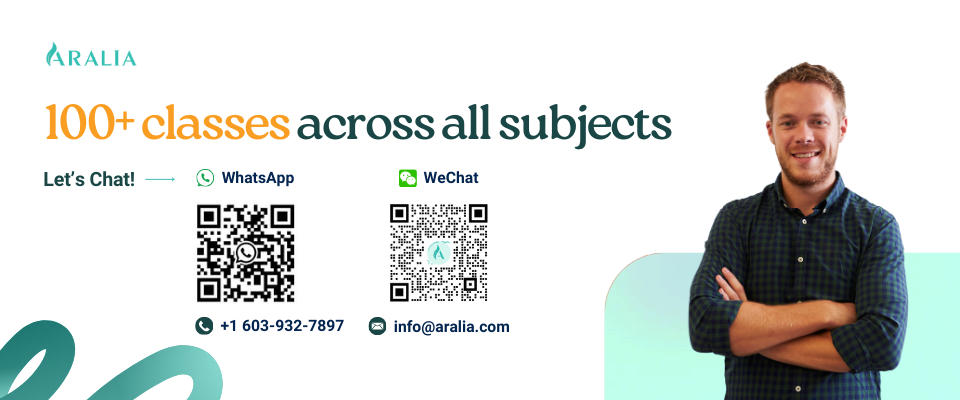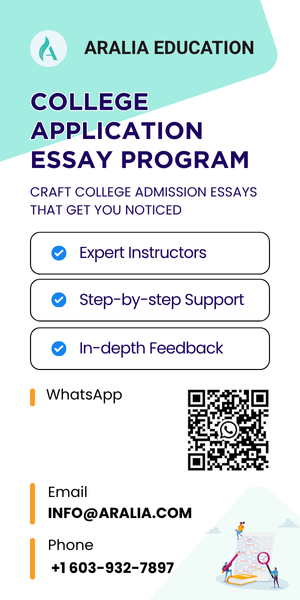For high school students, Art is an abstract field, and it can be defined in various ways. The definition of Art has been continually changing over the past centuries, since the Renaissance in the 15th century to the rise of technology and digital media in the 21st century. Overall, according to multiple sources, Art is a diverse range of human activities involving the creation of visual, auditory, or performing artifacts, which express the creator’s idea, emotion, or world view.
You discover your interest in Art, because you enjoy sketching, or drawing, or painting. However, your academic options to pursue Art or art history in high school might be limited. Besides the art studios and art classes your school offers, the College Board also has the AP Art and Design Program that allows you to gain more practice in 2-D Art and Design, 3-D Art and Design, and Drawing. However, your school might not offer related classes or have enough resources to continue your studies.
Therefore, what other resources can provide you with practice and further challenge you as an artist? To learn more about four ways you can pursue Art as high school students, keep reading.
1. Join an art club, or even start one of your own
Among all the students at your high school, you won’t be the only one with interest in art. Therefore, joining an art club will be the most straightforward first way to be involved and immerse yourself in the art scene. Here, you will have the chance to create arts with your peers who share the same interest, take field trips to museums, and create meaningful connections with local artists through attending art events & exhibits.
If your school doesn’t have an art club, you can start one of your own! Before jumping on and starting a new club, you should first ask your peers who have the same interest and might want to be on the executive board. This process will also help you brainstorm different directions and visions that you want to club to head towards. Starting your own club can sound challenging, but it will also boost your college application by showing your initiative and leadership.
2. Participate in Art Competitions as high school students
If you have an artwork that you’re particularly proud of, consider submitting it to different art competitions. Competitions are one of the best portfolios and application boosters for Art students, because of their recognition, scholarship, and networking opportunities.
Aralia’s students in the Art Portfolio Preparation Program have submitted multiple artworks to different competitions each year. Some of them have received significant awards that have become the launch of their creative career. All artworks are posted and recognized on our student-run blog, and you can check it out for inspirations!
Each year, the Scholastic Arts & Writing Program, the nation’s longest-running, most prestigious recognition program for creative teens, opens submissions for different art categories (check out all categories HERE). Qualified students from 13-18 years old in the US or Canada can attend the competition for the chance to earn scholarships and awards.
Besides the Scholastic Arts & Writing Awards, there are many other international and US-based competitions:
3. Pre-College Art Program
Another way to be involved in art is to participate in summer art program, a.k.a Pre-College Art Program during summer. These programs allow students to explore their creativity and express their ideas over a variety of mediums. By giving yourself an opportunity to be immersed in art for the summer, you can decide what aspect of art you want to pursue during college or reconsider your option of going to an art school. We have an article about top 11 art schools in America where we also discuss whether art school is right for you.
Top 5 Pre-College Art Program:
4. Preparing an Art Portfolio
After participating in the 2 or 3 activities above, you’ve decided to pursue art in college. Congratulations on being active and finding your passion in such an early stage of your life! The next important step is to have your portfolio ready. For students who don’t have a clear idea of what they want to include in their portfolio, Aralia’s blog: 3 Awesome Art Portfolio Ideas for College Applications by a RISD Professor will give inspiration on what you can put in your portfolio.
Preparing an art portfolio can be daunting and exhausting, since you aren’t sure what the admissions officer is looking for in a great art portfolio. If that’s the case, you can consider registering for our Art Portfolio Preparation Program. Taught by a RISD professor, this program covers a series of painting, design, and three-dimensional design projects. Students have a chance to improve their creative research and material experimenting abilities, and finally create an electronic art portfolio.
Aralia's Courses

For this course, students will conduct a series of painting, design, and three-dimensional design projects. Students have a chance to improve their creative research and material experiment abilities, and finally create an electronic art portfolio.
In the first few lessons, students will focus on observational painting training. They will discuss and study the works of famous artists to increase their knowledge of art and visual culture; students will also examine and do mask-making exercises. The focus of this course is on expressing movements, lines, contours, patterns, and the composition of negative and positive spaces to create patterns and shapes. In the final project, students will explore “Mask and Identity”. During the course, the works created by the students will be photographed and recorded, which will be used in the production of their electronic portfolio.











